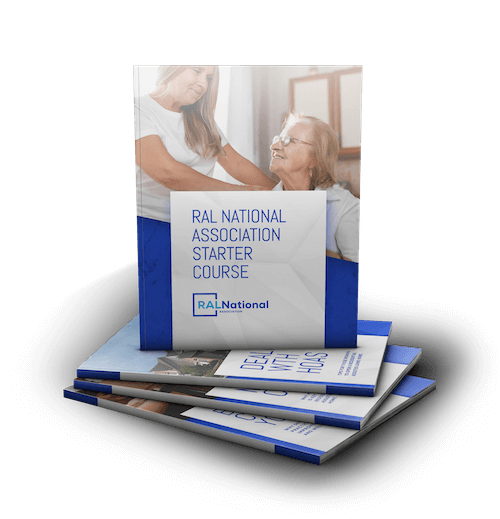The infamous word Alzheimer’s strikes fear and dismay wherever spoken. The thought of losing your thoughts, the idea of misplacing the purpose of your ideas, the possibility of losing decorum decimates hope. But, today, there is hope.
Dr. Dale Bredesen and his team are committed to finding a solution. As Functional Medicine physicians, Dr. Bredesen and his colleagues have taken a slightly different approach to treatment than the traditional pharmaceutical industry. This approach resulted in a big difference.
Opposed to symptomatology mitigation, Dr. Bredesen and his colleagues sought to address the underlying causes of Alzheimer’s disease.
The goal of this research pursuit coins “The 3 R’s”:
- Removal of specific exposures that contribute to cognitive impairment.
- Resilience to cognitive decline when optimal health support is in place.
- Rebuilding the neural pathways damaged by cognitive impairment.
By examining treatment options from a functional medicine perspective, with clear aggressive goals as a guiding light, Dr. Bredesen and his colleagues discover something extraordinary – hope.
SYNOPSIS OF THE BOOK THE END OF ALZHEIMER’S
Dale Bredesen’s New York Times best-selling book, The End of Alzheimer’s, conveys specific plans for preventing and reversing cognitive decline in those affected.
Dr. Bredesen discusses how to maximize brain power while also reducing and, in some cases eradicating the cognitive disease.
In The End of Alzheimer’s, Dr. Bredesen artfully instructs the reader about the science of his life-changing new program.
A detailed agenda is shared far more than theory but practice at first at dually preventing and reversing the effects of Alzheimer’s disease.
He has employed his program repeatedly with many of his patients, finding it both medically practical and hopeful.
One of the essential keys to Dr. Bredesen’s program is its specificity.
The Bredesen program is not a one-size-fits-all approach. He carefully examines the patient, gathers detailed information about their environment now and in the past, and a comprehensive understanding of their lifestyle.
This tailored approach makes a difference in both implementation and compliance. In addition, the program can apply to anyone of any age.
THE BREDESEN EXPLANATION
According to Bredesen, Alzheimer’s disease is a protective response to a wide array of attacks against the brain. These attacks include:
- Inflammation
- Insulin resistance
- Toxins
- Infections
- Inadequate nutrition
- Hormone imbalances
- Insufficient growth factors
Bredesen examines each patient to determine which attack requires immediate addressing and then sequences the others accordingly.
Bredesen needs his patients to incorporate a Ketoflex 12/3 Diet, which places the patient in ketosis.
This diet also fosters a restoration of the brain when combined with:
- a minimum 12-hour fast
- restorative sleep
- target supplementation
- exercise
- brain training
Dr. Bredesen also examines the degree of toxic exposure to the patient and finds solutions. His strategy works even when seniors remain in environments with toxic exposure.
Dr. Bredesen desires to share his guiding philosophy, clinical findings, and great passion for treating Alzheimer’s disease. As such, his book, The End of Alzheimer’s, captures more than clinical data. It offers much more than practical advice for men and women of all ages throughout the world.
Dr. Bredesen’s book gives the reader, consuming his seminal text, something quite remarkable – hope.
A REVIEW OF THE END OF ALZHEIMER’S
Dr. Dale Bredesen employs the artful skill combined with the didactical approach in his book, The End of Alzheimer’s.
An age-old technique, Bredesen tells a story to illuminate the point he makes. He tells the story as a father would his children, avoiding clinical jargon and medical terminology when possible.
The approach is not elementary. Yet, he makes the complicated simple enough for grandmother and grandson to understand.
A basketball enthusiast, Dr. Bredesen quotes the all-time winning coach of men’s basketball Pat Riley. He reminds the reader of Riley’s encouraging words to his players. “Imagine that your head is underwater, and you will not be able to breathe again unless you win.“
Taking drowning as an encouragement might seem rather aggressive. It worked. Numerous times Riley’s team rebounded to victory when the game was on the line.
Riley was a focused, diligent coach who cared about his players and knew victory led to further success.
With Riley as his inspiration, Dr. Bredesen approaches the treatment of Alzheimer’s likewise. He advocates for the treatment of all neurodegenerative diseases in this way.
Historically, many neurodegenerative diseases were considered terminal.
Dr. Bredesen is offended by such capitulation. His book reveals the great challenge before the nation if this approach continues.
Statistics estimate nearly 13 million Americans will have dementia by 2050. What kind of society will we have if this disease goes unaddressed?
Dr. Bredesen will not hesitate in the fight to achieve victory.
Bredesen makes the socio-economic ramifications plain. If 13 million Americans find themselves with dementia by 2050:
- How many families collapse?
- What will the state of Medicare be if this is allowed to happen?
- How many families face bankruptcy?
- Who will shoulder the multi-trillion-dollar burden of care?
Dr. Bredesen looks at these impending realities and practices functional medicine as if he is drowning. Without a cure, the nation will undoubtedly suffer.
Dr. Bredesen’s concern extends to the limited resources allocated to treat Alzheimer’s. Bredesen questions the treatment approach as a whole based on it being a blind shot.
The current “standard of care is to treat without determining the cause of or contributors to Alzheimer’s,” which is quite different from treatment plans for other diseases.
Bredesen’s concerns are:
- The lack of innovation.
- The absence of inspiration.
- The chronic use of ineffective approaches as if they will somehow work.
- Limited treatment with the help of one to two drugs.
A PERSONALIZED APPROACH
Dr. Bredesen is careful to ensure his audience recognizes he is addressing them, not medical practitioners or researchers.
He ensures that every person receives the necessary information for decision-making and the purposeful disposition of hope.
He encourages those receiving the frightful diagnosis of Alzheimer’s disease to take charge. Take ownership of your condition and advocate for yourself.
He writes, “Please don’t be concerned if you get your tests, take them to your doctor, and he or she is skeptical… don’t be surprised if he or she brushes you off with an all-knowing smile or even a look of disdain.”
This posture, clearly offensive to Dr. Bredesen, is reminiscent of the arrogance of experts. They refrain from learning anything new in their field of expertise.
Nonetheless, Bredesen advocates for a personalized approach to Alzheimer’s treatment. The one-size-fits-all is a proven failure.
Why continue leveraging it?
The tests Bredesen suggests do not disclose whether or not you have Alzheimer’s disease. The tests reveal why you have Alzheimer’s disease – this is a fundamental shift in the diagnosis and treatment paradigm.
To adequately address the challenge presented by Alzheimer’s disease, practitioners and patients should be aware of the causes. Often, patients are diagnosed with:
- Mild Cognitive Impairment (MCI) – the precursor to Alzheimer’s
- Subjective Cognitive Impairment (SCI) – the precursor to MCI
These syndromes have between 10 and 25 contributors demanding attention if the disease process is halted and reversed.
EVOLUTION IN DIAGNOSIS
Dr. Bredesen operates a research laboratory. Over time, he and his laboratory professionals identified APP, an acronym for amyloid precursor protein.
The discovery of this little-known protein explained to Dr. Bredesen specific factors that switch the brain into an Alzheimer’s mode.
Dr. Bredesen and his group of researchers discovered that Alzheimer’s disease is not simple, but is instead a multifaceted one depending upon the contributing factors.
Bredesen classifies Alzheimer’s disease in the following way.
Type 1 Alzheimer’s
Inflammatory response: perpetual inflammation throughout the body for an extended period leads to this type of Alzheimer’s disease. NFkB, the Nuclear Factor Kappa-Light-Chain of Activated B-cells, increases the production of scissor-like molecules resulting in APP production. These cells are a direct link to Alzheimer’s disease.
- Type 2 Alzheimer’s
Atrophic: chronic malnutrition, sub-optimal levels of hormones or growth factors, which aid in healthy cell development, increase the risk of Alzheimer’s disease. Without healthy cell development and nutritional support for the brain’s massive processing load, memories and other brain functions begin to decline—another direct link to Alzheimer’s disease.
Type 1.5 Alzheimer’s
Glycotoxic: high blood sugar, elevated fasting insulin, and other glycemic measures beyond the norm increase the risk of Alzheimer’s drastically. This type is “1.5” because Type 1 and Type 2 cause underlying situations. In other words, Type 1 is associated with high blood sugar, while Type 2 is associated with hyperinsulinemia. The result, in either case, is inflammation.
- Type 3 Alzheimer’s
Toxic: Industrialization brought vast riches to America, but it also got toxicity never known to man before the era. Toxics such as:- Mercury
- Toluene
- Mycotoxins – toxins from molds (Stachybotrys/Penicillium)
Exposure to these toxins increases the risk of Alzheimer’s disease as well. Exposure is often unavoidable, but limiting exposure, especially in the wake of symptomatology that indicates trouble, is wise. Also, excretion and metabolism of the toxins are best, and this happens through various means. Functional Medicine physicians are experts at removing toxins from the body.
- Type 4 Alzheimer’s
Vascular: Cardiovascular disease is a horrific leading cause of Alzheimer’s disease. Vascular leakiness represents one of the earliest identifiable changes in one’s vasculature associated with cardiovascular causes of Alzheimer’s disease.
- Type 5 Alzheimer’s
Traumatic: According to Toland Law, Criminal Defense & Immigration Law Firm, head trauma in any form, from a traffic accident to a fall, or repetitive injury from sports, increases the risk of Alzheimer’s disease.
By identifying the multiple contributing factors to Alzheimer’s disease., treatment becomes less of a shot-in-the-dark and more like a robust clinical approach. Dr. Bredesen longs to see patients recover from this dreadful disease and ceaselessly works, like a Pat Riley player, to see the victory come to fruition.
ASSISTED LIVING HOPE FOR THE HOPELESS
Dr. Bredesen’s book, The End of Alzheimer’s, offers hope to those affected by this dreadful diagnosis.
It is no longer a series of unknowns, which are probably most frightening but more like exploring the truth.
Bredesen, his brave colleagues, and masterful researchers seek to compete against this disease as if they are drowning in classic Pat Riley fashion.
These passionate professionals aim to help Americans avoid and reverse the progression of Alzheimer’s disease.
The goal is clear, and the picture of victory is crisp:
- Removal of specific exposures that contribute to cognitive impairment.
- Resilience to cognitive decline when optimal health support is in place.
- Rebuilding the neural pathways damaged by cognitive impairment.
To learn more about Dr. Dale Bredesen’s approach to the problem of Alzheimer’s, secure his book. You will become informed, empowered, and hopeful.
The Residential Assisted Living National Association seeks to offer hope to investors, owners, and operators of assisted living homes and residents and their families.
For more information about optimizing senior living and providing quality care, contact the Residential Assisted Living National Association for a free membership today.











